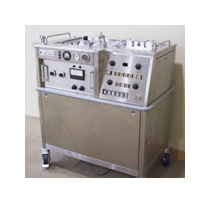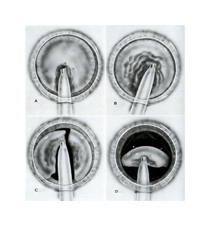Phacoemulsification
Charles Kelman, MD (1930-2004) famously had an “aha” moment when a dentist used a Cavitron high-frequency ultrasonic probe to clean his teeth. The dental probe had to be significantly modified, but the phacoemulsification procedure was ready for the first human patient in 1967. Two of his colleagues talk about his influence on cataract surgery in this video.
Mastering Phaco

In the early years many surgeons found phacoemulsification difficult to master. Kelman recognized that surgical outcomes depended heavily on proper use of the machinery so he provided instruction courses starting in the early 1970s.
Phaco and IOLs

There was limited incentive for small incision surgery when the wound had to be opened from 3.0 mm to 7.0 mm in order to accommodate the early intraocular lens implants. It would take over 10 years before foldable IOLS and familiarity with microsurgery made phacoemulsification the procedure of choice.